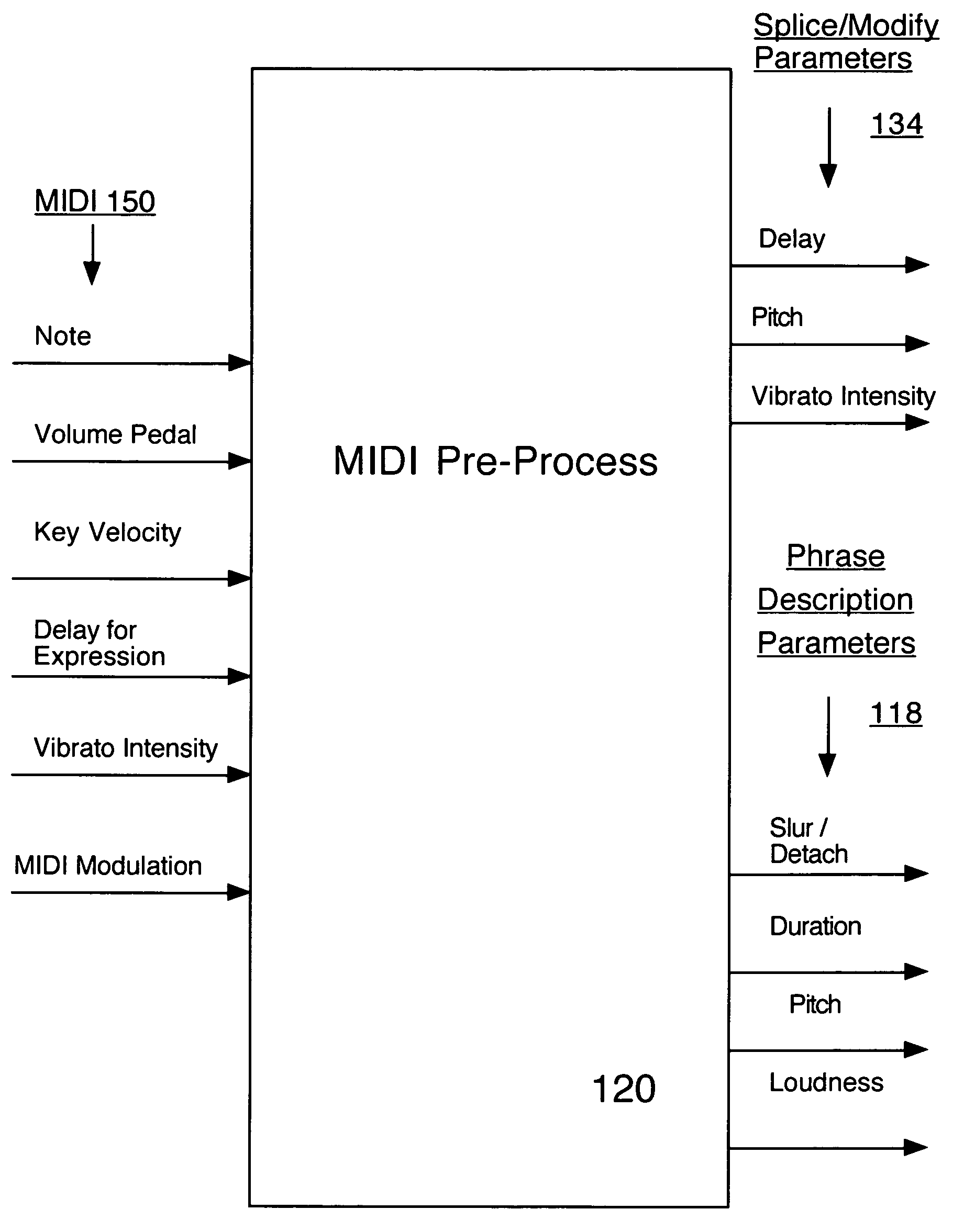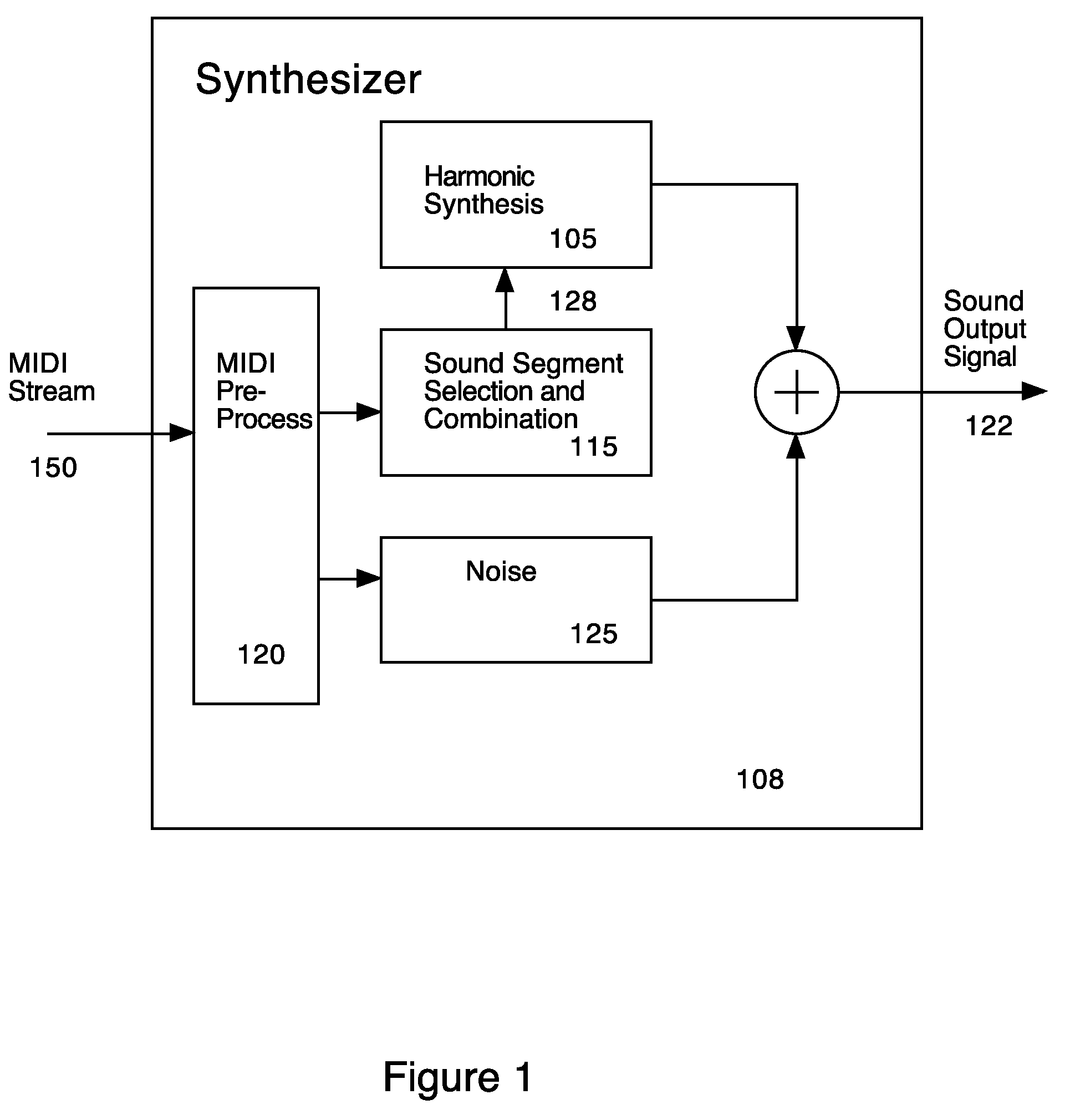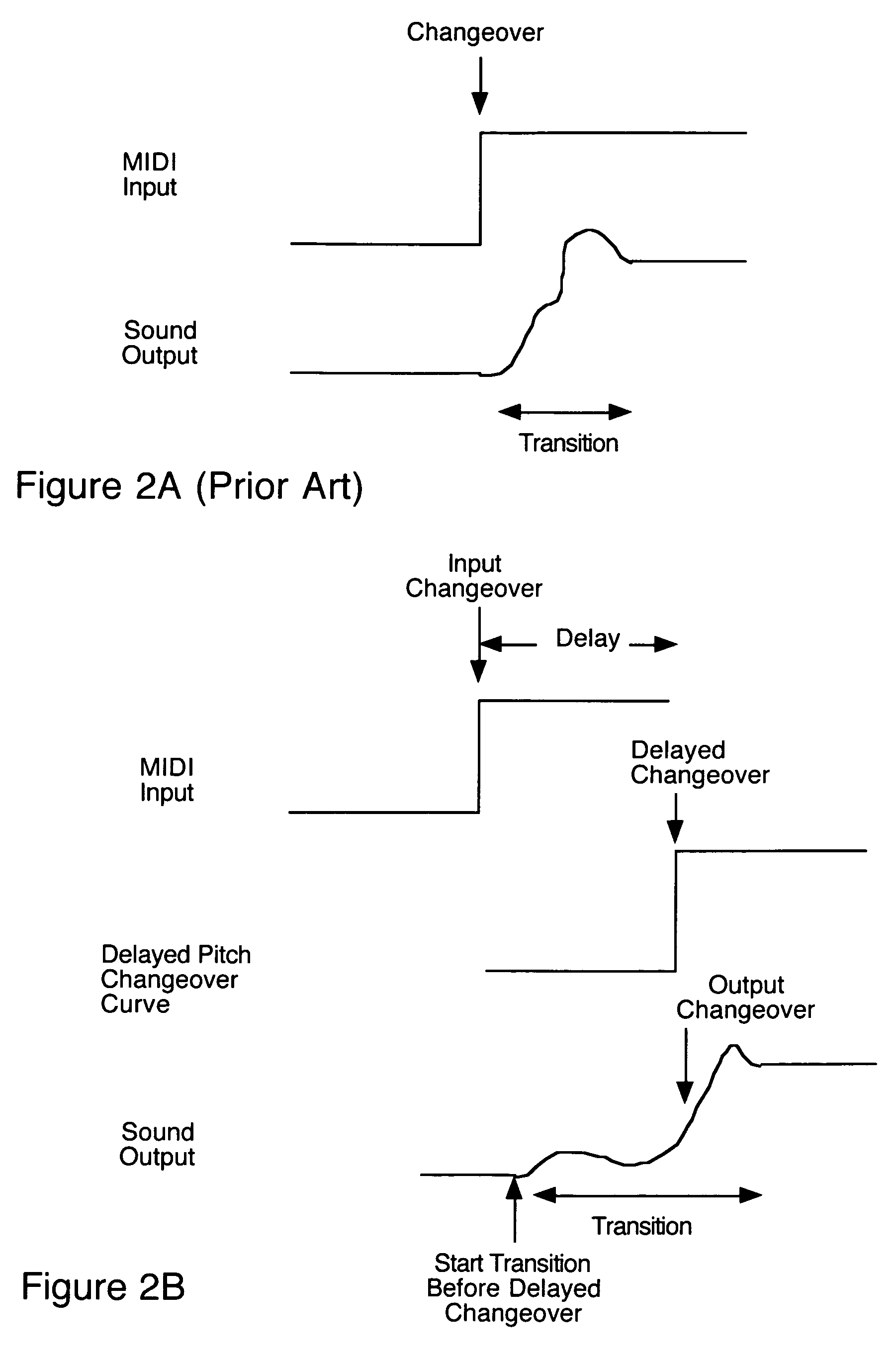Expressive music synthesizer with control sequence look ahead capability
a music synthesizer and sequence look-ahead technology, applied in the field of synthesizing sound, can solve the problems of poor synthesizing sound, and achieve the effect of increasing the realism of the transition between notes
- Summary
- Abstract
- Description
- Claims
- Application Information
AI Technical Summary
Benefits of technology
Problems solved by technology
Method used
Image
Examples
first embodiment
[0053]FIG. 5 is a block diagram illustrating the present invention, wherein the MIDI control stream 150 is generated “live” by a musician 602 (for example with a keyboard) and the synthesizer 108 of FIG. 1 inserts an actual delay to generate note transitions. A small delay in the range 10-40 milliseconds between receipt of MIDI stream 150 and the output of sound data 128 derived from sounds segments is necessary to allow the note transitions to begin before the changeover point.
second embodiment
[0054]FIG. 6 is a block diagram illustrating the present invention, wherein the MIDI control stream 150 is generated from stored data 603 by a MIDI sequencer 604a. After the synthesizer 108 of FIG. 1 receives the control stream, it waits an actual delay time, in order to allow time to generate note transitions. The range of this delay time is longer than the previous embodiment, ranging from a fraction of a second to several seconds. This longer delay is permitted because there is no “live” performer requiring immediate audio feedback. The longer delay permits a longer and better anticipation of the changeover point. The stored data 603 might reside in a data file or computer memory. This embodiment is very similar to that of FIG. 5, except for the source of MIDI stream 150 and the length of the delay.
[0055]FIG. 7 is a block diagram illustrating a third embodiment of the present invention, wherein the MIDI input stream 150 is generated from stored data 603 by a MIDI sequencer 604b. ...
fourth embodiment
[0056]FIG. 8 is a block diagram illustrating the present invention, wherein the MIDI input stream 150 is generated from stored data 603 by a MIDI sequencer 604c in the traditional manner, and wherein the sequencer 604c further responds to requests 152 by the synthesizer to provide data 150a relating to upcoming note changeovers to allow the synthesizer 108 of FIG. 1 to use a delay to generate note transitions. This is called the “query ahead” approach, because the synthesizer queries the MIDI sequencer for information about the stored sequence ahead of when the synthesizer needs to generate sound output for that sequence. Either MIDI sequencer 604c could flag upcoming transitions, or MIDI sequencer 604c could allow synthesizer 108 of FIG. 1 to examine the sequence as it is generated (before it is output) so that synthesizer 108 of FIG. 1 can determine when transitions will occur, or the sequencer can respond to function calls requesting specific information about the future of the s...
PUM
 Login to View More
Login to View More Abstract
Description
Claims
Application Information
 Login to View More
Login to View More - R&D
- Intellectual Property
- Life Sciences
- Materials
- Tech Scout
- Unparalleled Data Quality
- Higher Quality Content
- 60% Fewer Hallucinations
Browse by: Latest US Patents, China's latest patents, Technical Efficacy Thesaurus, Application Domain, Technology Topic, Popular Technical Reports.
© 2025 PatSnap. All rights reserved.Legal|Privacy policy|Modern Slavery Act Transparency Statement|Sitemap|About US| Contact US: help@patsnap.com



